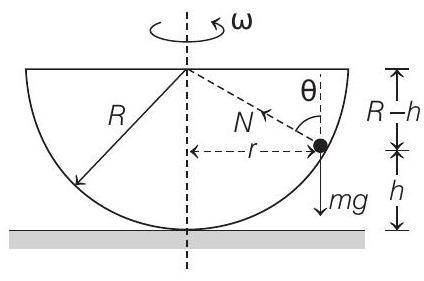Laws of Motion 4 Question 10
10. A hemispherical bowl of radius
Show Answer
Answer:
Correct Answer: 10. (a)
(b)
Solution:

Given,
(a) FBD of particle in ground frame of reference is shown in figure. Hence,
and
Dividing Eq. (ii) by Eq. (i), we obtain
This is the desired relation between
For non-zero value of
Therefore, minimum value of
or
(b) Eq. (iii) can be written as
If
or






